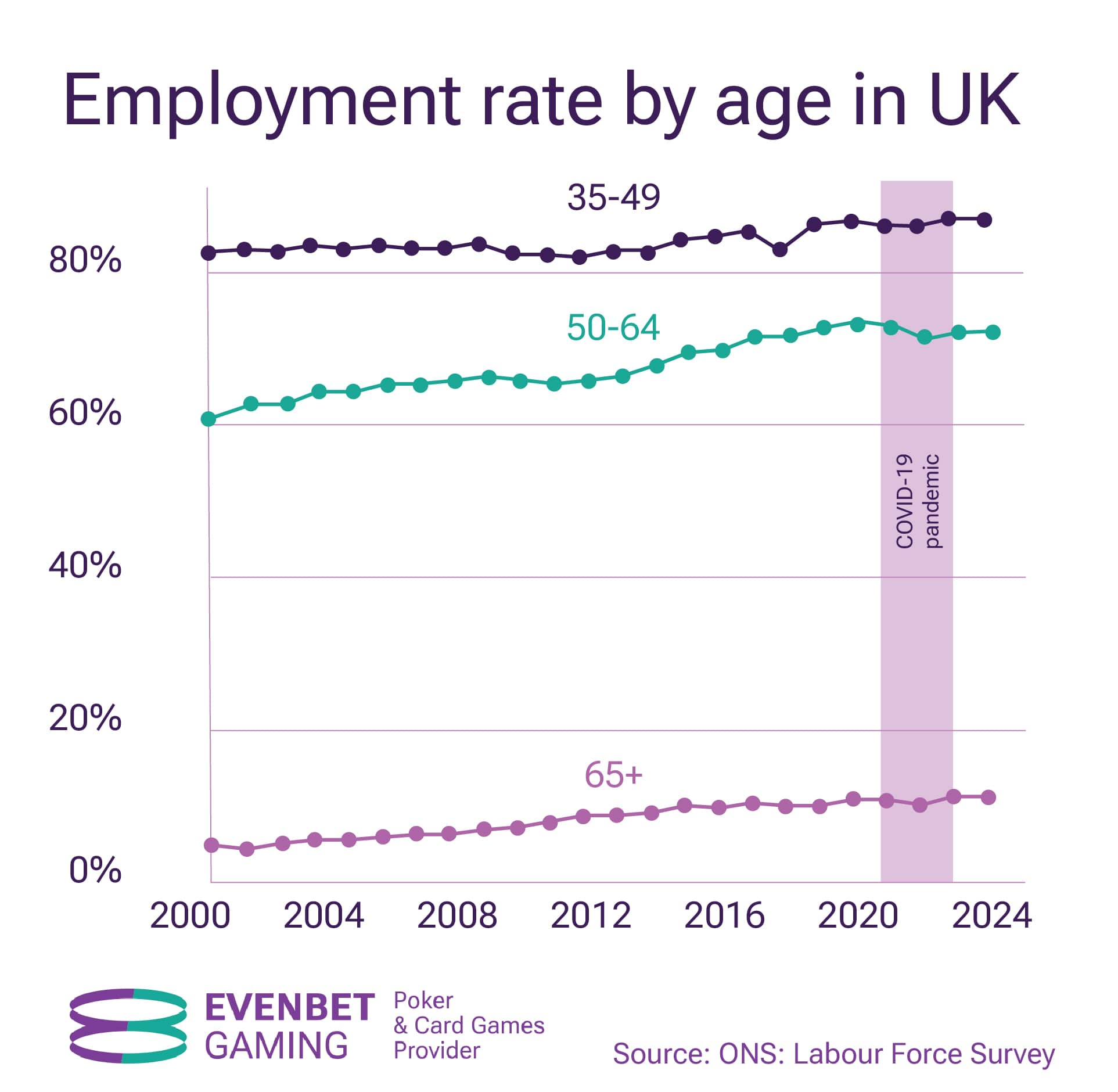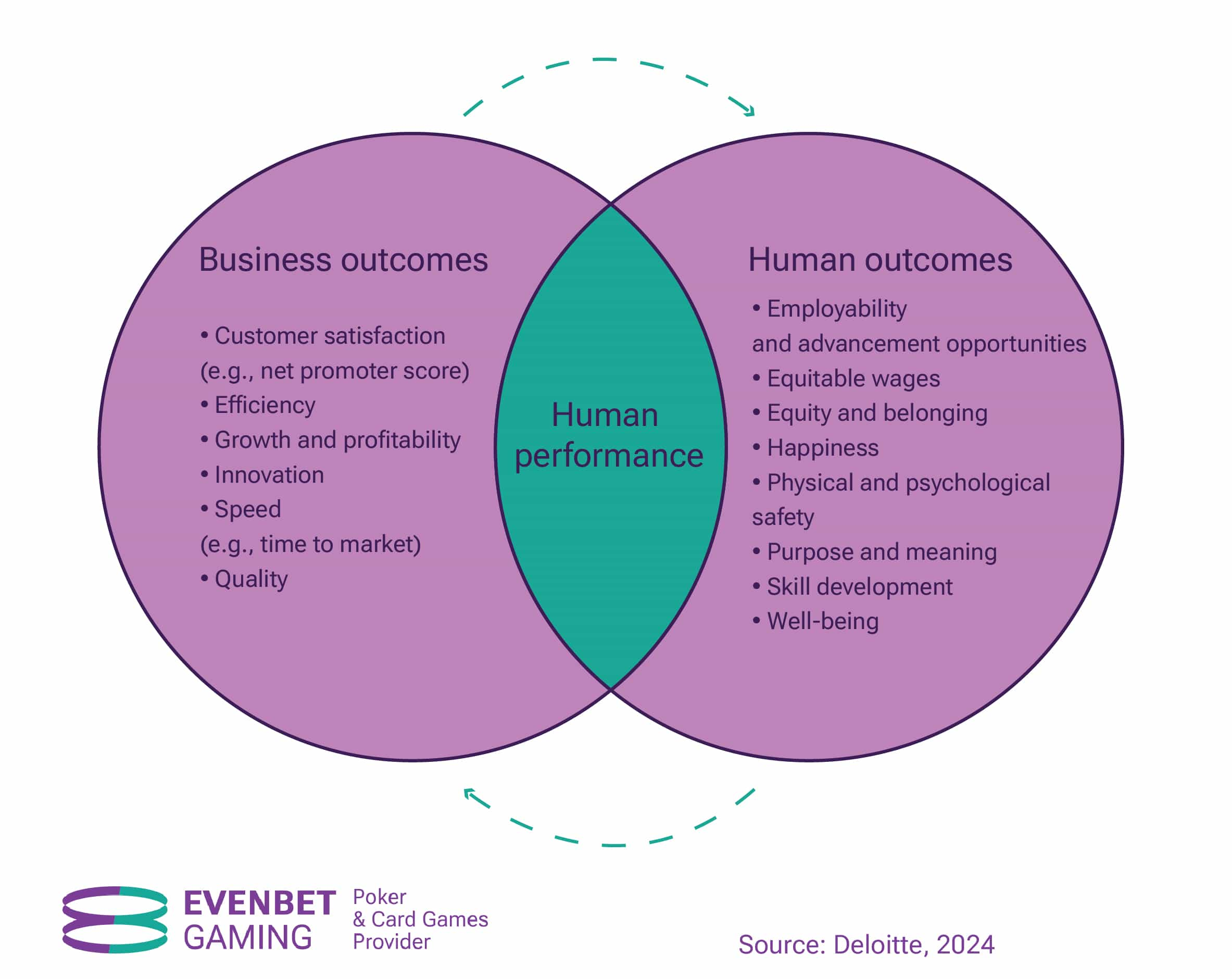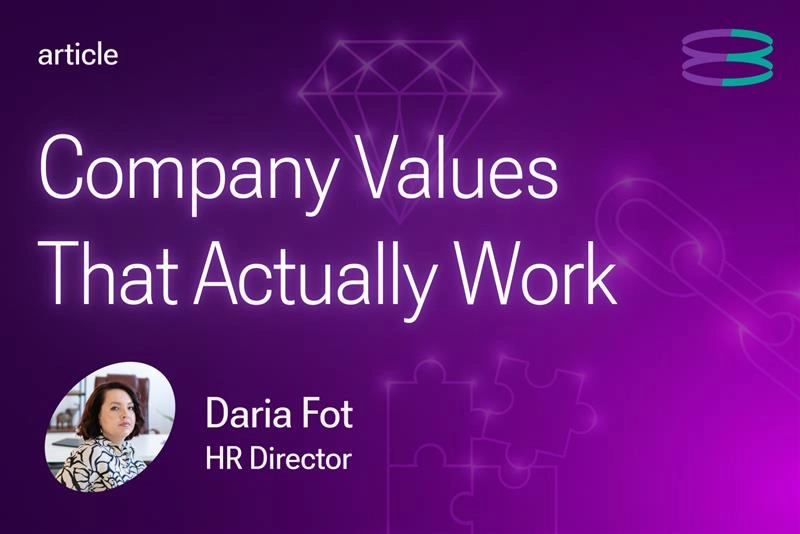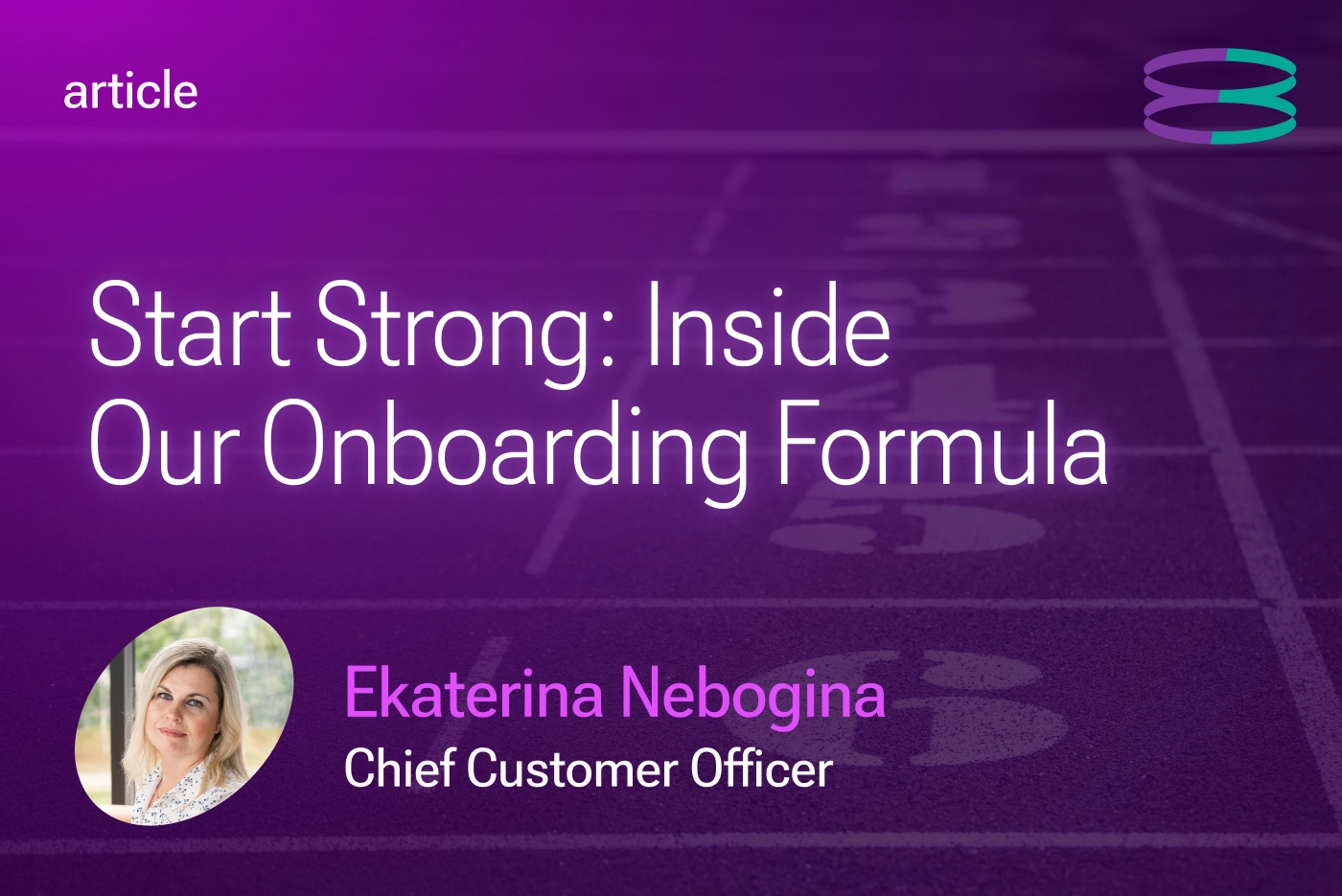The rapid growth of technology, demographic shifts, and various global events have led to a swift transformation of the labour market. It’s no longer appropriate to say that we’re on the brink of a new era, as this new era is already upon us. It’s crucial for businesses to promptly acknowledge these new realities and make informed decisions in HR management.
In this article, I’ll discuss some of the most important trends that many companies overlook or fail to consider in their HR practices. Neglecting these trends could be detrimental to businesses, as relying on HR management practices from a decade ago may soon lead to significant challenges.
It’s worth noting that these trends are particularly relevant to Europe, the USA, and some countries in Asia. In other regions, the economic, demographic, and historical contexts may result in different situations.
Retain Current Employees
Due to demographic shifts, many countries are experiencing an increase in the proportion of middle-aged and older populations. For example, according to data from the Centre for Ageing Better, one in three workers in the UK is already over 50 years old. This means that younger generations cannot fulfil all the staffing needs, and it will become increasingly difficult for businesses to find replacements for departing employees.

This issue undoubtedly needs to be addressed at the government level. However, businesses also need to take action. Firstly, it’s essential to adjust internal corporate processes to retain current employees and prolong their employability.
In addition to encouraging long-serving employees, businesses should consider health factors: implementing internal well-being programmes, mental health preservation programmes, and employee training and reskilling programmes.
It’s also important for corporate values to resonate not only with younger employees but also with older ones. For example, supporting family values would undoubtedly be a good idea. By the way, several studies are showing that married employees are more satisfied with their jobs and exhibit a slight increase in productivity.
Pay Attention to Generation Z
Generation Z includes people born in the late 1990s and 2000s. Many of them have already reached working age and are preparing to replace previous generations in the workforce. However, it should be noted that the expectations of Generation Z may conflict with the preferences of their older colleagues. The task of HR management here is to make balanced decisions that satisfy all employees.
So, what special requirements does Generation Z have for employers?
- Technology. Representatives of Generation Z cannot imagine life without the internet, and they spend most of their time online. As consumers, they expect purchases to be quick and easy. A representative of Generation Z may easily abandon a purchase if it requires waiting in line. As employees, they value the use of the latest technologies in the workplace to optimise and speed up work processes.
- Health. According to recent studies, members of Generation Z are more likely to experience mental health problems compared to previous generations. They easily experience burnout and often prefer not to engage in face-to-face communication.
Recently, my colleague shared a story. A young woman responded to a job vacancy but refused to answer when an HR manager called her. Later, she explained that she does not speak on the phone as a matter of principle. The absurdity of the situation is that the vacancy primarily involved answering customer calls.

- Social activism. Members of Generation Z consider Corporate Social Responsibility (CSR) very important. They prefer to work for companies engaged in charity work and participating in various social initiatives. This aspect is particularly important in the gambling industry, which many view with bias, and some may consider it unethical to work in such companies.
- Education. Since members of Generation Z are still very young and lack significant work experience, they are particularly attracted to employers who offer training, internships, and other opportunities for skill development.
Creating a comfortable and friendly atmosphere at work is crucial for their successful onboarding and retention. They need psychological support systems and certain shifts in corporate culture. In particular, Generation Z prefers to address colleagues by their first names. They consider supervisors as equals, viewing them simply as colleagues with the responsibility to lead, coordinate, and make decisions. Additionally, this generation especially values work-life balance and appreciates flexible schedules and remote work formats.
Find Hidden Workers
An alternative to hiring youth is hiring ‘hidden workers’. This term refers to categories of workers who are typically overlooked by recruiters: caregivers, retirees, people with disabilities, former prisoners, refugees and immigrants, as well as partners and spouses of relocators. Often, they end up working low-paying jobs, even though they are motivated to build a fulfilling career.
According to a report by Harvard Business School, there are three main reasons why these people remain “hidden”.
- Rigidity of the recruitment system. HR departments focus on finding ideal candidates who fully meet the job requirements. In pursuit of efficiency, recruiters use very specific parameters to minimise the number of actively considered candidates. Most of them employ filtering based on indirect criteria, regardless of qualifications, such as lack of steady employment.
- Training gap. Often, individuals in this category are not considered because they lag behind the skill requirements, especially those related to new technologies, as their development requires employment. This creates a vicious cycle that is almost impossible to break out of.
- Failure in assessing economic efficiency. Many companies that hire hidden workers do so as part of CSR. As a result, this is perceived in the labour market as charity rather than acquiring valuable labour.
However, the market needs the labour of these categories, and they, in turn, want to contribute to the market with their work. Nevertheless, to unlock the potential of hidden workers, many companies need to reform their recruitment systems.
- Study the sociology of hidden workers, segment them, and select segments that can succeed and become valuable employees considering the specifics of your company.
- Engage a senior leader to monitor and coordinate the hiring and onboarding of hidden workers. They must understand that this process addresses the task of filling the ever-widening skills gap.
- Adapt the recruitment system to facilitate the job application process for this category of people. For example, consider that many hidden workers look for jobs through job centres.
- Rewrite job descriptions. Do not overload them with outdated requirements that you would like to see in a candidate, but focus on strictly mandatory knowledge and skills.
- Shift the focus from negative filters to positive ones. Actively consider a candidate if they have the necessary skills, rather than immediately rejecting them based on indirect indicators like gaps in employment history.
- Review your HR metrics system. Evaluate the HR department based on the time it takes for new employees to reach the desired level of productivity, promotion rates, and turnover rates.
- Change your attitude towards hiring hidden workers. Evaluate them based on return on investment, rather than participation in CSR.
- Foster a culture of tolerance and inclusivity, as well as a mentoring system. Your employees should understand the circumstances in which hired hidden workers find themselves, as well as the importance of their work to the entire team. Encourage mutual assistance in the team to improve the onboarding process for hidden workers.
Mind the Human Performance Concept
In today’s rapidly evolving business landscape, the equation for success is being rewritten. No longer is it solely about maximising business outcomes; instead, a new formula emerges, one that puts human performance at its core. According to the latest report by Deloitte, this paradigm shift is not just a buzzword; it’s a fundamental reimagining of how organisations operate and thrive in the modern world.
At the heart of this transformation lies the concept of human performance as a mutually reinforcing cycle, where human outcomes multiply with business outcomes to create sustainable value for workers, organisations, and society as a whole. This equation, dubbed “The New Math of Human Performance,” encapsulates the essence of a forward-thinking approach to organisational success.

So, what does this new maths entail? It begins with a shift in mindset, a departure from the traditional industrial-era view of workers as mere cogs in a machine. Instead, organisations are encouraged to embrace a holistic perspective, one that values the well-being and fulfilment of every individual within the workforce.
One of the key pillars of this approach is thinking like a researcher. By leveraging cutting-edge technology and data analytics, organisations can gain deeper insights into the needs and aspirations of their workforce. This transparency not only fosters trust but also empowers employees to unleash their innate creativity and problem-solving abilities, driving innovation and value creation.
Moreover, co-creation emerges as a guiding principle, emphasising collaboration between employers and employees in designing people practices and digital spaces that prioritise human outcomes. This inclusive approach ensures that the workplace is not only relevant but also supportive of the diverse needs and aspirations of the workforce.
Improve Transparency and Trust
Transparency is often heralded as a cornerstone of trust-building, with the prevailing belief that increased openness leads to greater trust. Indeed, research indicates that certain forms of transparency, such as straightforward communication and sharing of pertinent information, can foster trust between workers and organisations. However, trust is a multifaceted concept that extends beyond mere transparency.
While employee engagement has long been used as a proxy for measuring organisational relationships, trust offers a more nuanced perspective. Unlike engagement, which focuses on willingness to extend oneself for the organisation’s benefit, trust delves into the fundamental belief that the organisation will support the individual’s interests.
However, the journey to building trust is fraught with complexities, requiring careful consideration of what information to disclose and to whom. While transparency can enhance trust among stakeholders, divulging highly personal information may inadvertently sow discord and mistrust.
What data should be transparent and accessible to employees:
- Company priorities and goals.
- Business information, including financial performance.
- Decision-making processes.
- Skills needed by the company in rapidly evolving technologies.
Sensitive information about ongoing discussions at the top management level, and even information about employee salaries, can also be disclosed, of course, with their consent. However, this is an extremely risky path. Such a high level of transparency requires an extraordinarily high level of trust between the business and its employees.
It’s also important to note that transparency is intended only within the company. Businesses also need to ensure data protection, including preventing leaks of employees’ personal data.
Conclusion
Over the past decade, the world has changed significantly, and along with it, the labour market. As always, those who are attentive enough to notice changes in a timely manner and flexible enough to quickly develop the right solutions are the ones best equipped to handle new challenges.
The main challenge for businesses in HR is the growing talent shortage. HR policies that involve squeezing every last drop of effort from an employee, discarding them, and hiring a new one have long ceased to lead to anything good. Modern businesses must value their team, develop the potential of each employee, and also find sources of talent among those categories of people who were previously overlooked.





 Upd: 26 August 2024
Upd: 26 August 2024 





















